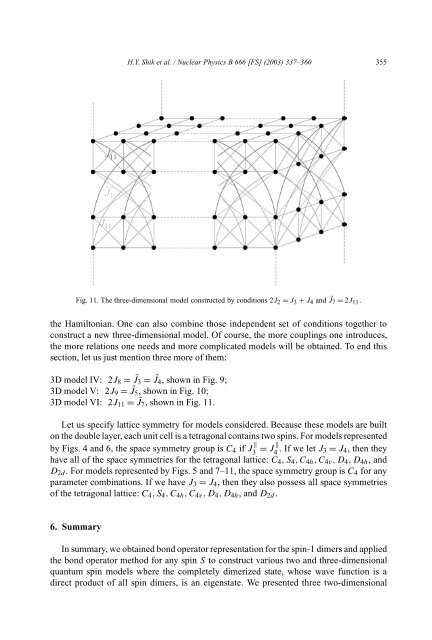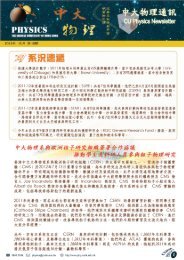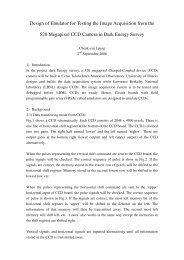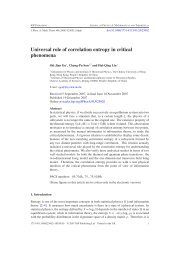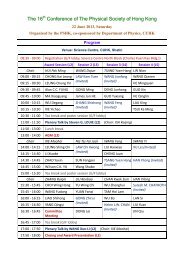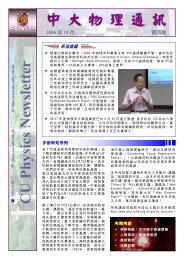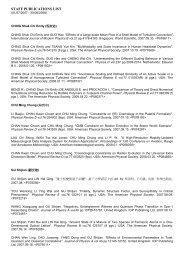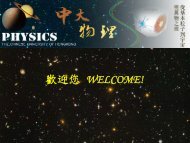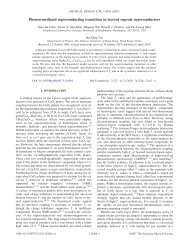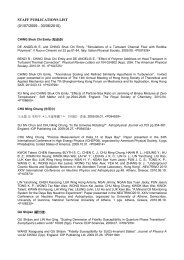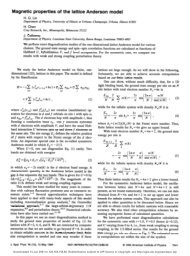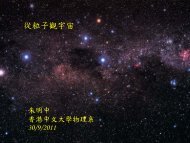Constructing soluble quantum spin models - Department of Physics ...
Constructing soluble quantum spin models - Department of Physics ...
Constructing soluble quantum spin models - Department of Physics ...
You also want an ePaper? Increase the reach of your titles
YUMPU automatically turns print PDFs into web optimized ePapers that Google loves.
H.Y. Shik et al. / Nuclear <strong>Physics</strong> B 666 [FS] (2003) 337–360 355<br />
Fig. 11. The three-dimensional model constructed by conditions 2J 2 = J 3 + J 4 and ˜ J 7 = 2J 11 .<br />
the Hamiltonian. One can also combine those independent set <strong>of</strong> conditions together to<br />
construct a new three-dimensional model. Of course, the more couplings one introduces,<br />
the more relations one needs and more complicated <strong>models</strong> will be obtained. To end this<br />
section, let us just mention three more <strong>of</strong> them:<br />
3D model IV: 2J 8 = J˜<br />
3 = J˜<br />
4 , shown in Fig. 9;<br />
3D model V: 2J 9 = J˜<br />
5 , shown in Fig. 10;<br />
3D model VI: 2J 11 = J˜<br />
7 , shown in Fig. 11.<br />
Let us specify lattice symmetry for <strong>models</strong> considered. Because these <strong>models</strong> are built<br />
on the double layer, each unit cell is a tetragonal contains two <strong>spin</strong>s. For <strong>models</strong> represented<br />
by Figs. 4 and 6, the space symmetry group is C 4 if J ‖ 3 = J ‖ 4 .IfweletJ 3 = J 4 , then they<br />
have all <strong>of</strong> the space symmetries for the tetragonal lattice: C 4 ,S 4 ,C 4h ,C 4v ,D 4 ,D 4h ,and<br />
D 2d . For <strong>models</strong> represented by Figs. 5 and 7–11, the space symmetry group is C 4 for any<br />
parameter combinations. If we have J 3 = J 4 , then they also possess all space symmetries<br />
<strong>of</strong> the tetragonal lattice: C 4 ,S 4 ,C 4h ,C 4v ,D 4 ,D 4h ,andD 2d .<br />
6. Summary<br />
In summary, we obtained bond operator representation for the <strong>spin</strong>-1 dimers and applied<br />
the bond operator method for any <strong>spin</strong> S to construct various two and three-dimensional<br />
<strong>quantum</strong> <strong>spin</strong> <strong>models</strong> where the completely dimerized state, whose wave function is a<br />
direct product <strong>of</strong> all <strong>spin</strong> dimers, is an eigenstate. We presented three two-dimensional


